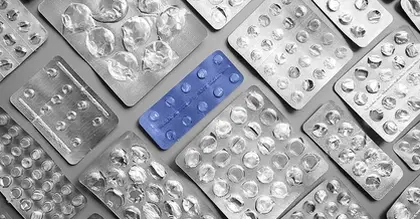
- Recent research on mice suggests that daily exposure to a warm environment, like a sauna, could help older adults, particularly women, combat age-related obesity and insulin resistance.
- This study highlights whole-body heat therapy as a simple, non-invasive approach to promote Healthier aging and manage menopause-related weight gain.
- The findings reveal that heat treatments improve insulin sensitivity and reduce fat accumulation, potentially offering a relaxing alternative for those who find physical activity challenging.
New research, presented at NUTRITION 2024 — the annual meeting of the American Society for Nutrition, which took place from June 29 to July 2 in Chicago — highlighted heat treatments as a straightforward method to encourage Healthier aging.
The findings of the study in question revealed that older female mice subjected to a daily 30-minute whole-body heat treatment gained less weight and exhibited better insulin utilization, aiding in blood sugar regulation, compared with older female mice who did not undergo daily heat treatment.
The researchers also explored the biological mechanisms behind these positive effects.
Women are more likely than men to have obesity or overweight, especially after menopause, due to the loss of estrogen in their bodies.
This study suggests that whole-body heat therapy could be an effective and noninvasive method for managing both age-related and menopause-related weight gain and insulin resistance.
In the study, researchers used 10-month-old mice to model aging and mice with their ovaries removed to simulate postmenopausal conditions. To induce weight gain, the mice were fed a Western diet containing 45% of calories from fat.
One group of mice underwent daily 30-minute heat therapy sessions in a heat chamber set to 40℃ (104°F) for 12 weeks, while the other group did not receive any heat treatment.
The aging mice that received heat treatment showed no tissue damage and had significantly lower levels of lactate dehydrogenase, indicating reduced aging-related tissue damage.
The therapy also effectively countered weight gain caused by a high fat diet in both aging mice and in mice with their ovaries removed.
Compared to the untreated mice, those that underwent heat therapy exhibited notable improvements in insulin sensitivity and insulin signaling, as well as decreased fat accumulation in critical areas like the liver and brown fat.
While adipose tissue stores energy, brown fat is a metabolically active type of fat that helps the body burn more energy.
Rong Fan, a doctoral candidate, presented the study and also explained the key findings to Medical News Today:
“Our research shows that daily whole-body heat treatment (104-113°F) for 30 minutes can significantly reduce obesity and improve insulin sensitivity in older female mice and mouse models that simulate menopause. The 30-minute daily duration for heat treatment was chosen based on CDC guidelines, which recommend at least 150 minutes of moderate-intensity physical activity per week for adults.”
— Rong Fan, study author
Fan said that the treatment works “by activating specific calcium channels in brown fat, a type of fat in our body that burns calories to produce heat.”
“This process helps the body increase its energy expenditure, similar to the metabolic effects of aerobic exercise. Essentially, this heat treatment helps improve metabolic health by partially mimicking some of the beneficial effects of exercise,” Fan explained.
Earlier research has shown that people tend to lose brown fat as they age and enter menopause, which contributes to a slower metabolism.
The researchers also investigated the molecular mechanisms behind the positive effects of heat therapy.
They discovered that heat activates several molecular processes that enhance the body’s fat-burning capabilities.
A key element is the protein TRPV1, which acts as a calcium ion channel in the cell membrane. When stimulated by heat, TRPV1 initiates a process known as futile cycling, where the body expends energy (in the form of ATP) to pump calcium ions across cell membranes.
Activation of TRPV1 and the resulting calcium cycling also promote the breakdown and burning of fats, reducing fat accumulation in tissues like the liver and improving the body’s insulin sensitivity, which is vital for overall metabolic health.
This sequence of events suggests that regular heat exposure can mimic the effects of calorie burning and fat loss.
It could be especially beneficial for individuals who find physical activity difficult, offering a relaxing method to enhance metabolic health.
The researchers emphasise that further studies are needed to determine the optimal duration and intensity of heat exposure for health benefits in humans and to confirm its safety and effectiveness across different populations.
Mark A. Anton, MD, medical director at Slimz Weightloss, who was not involved in this research, said that the research “is quite promising as it highlights a non-invasive, low-cost intervention that could help mitigate menopause-related weight gain and insulin resistance.”
“The mechanisms identified, such as TRPV1-mediated futile calcium cycling, provide a scientific basis for the benefits observed with heat treatments,” Dr. Anton explained.
“As we age, our metabolism and energy expenditure decrease. In women, these changes often begin around ages 45-50, coinciding with menopause. This mid-life phase is critical for implementing effective and accessible intervention strategies. Our research highlights the potential of whole-body heat treatment as a simple, non-invasive method to address age-related metabolic challenges and improve overall health.”
— Rong Fan, study author
Anton noted that this study suggests that regular sauna use could be a valuable addition to lifestyle modifications aimed at combating age-related metabolic issues.
“While more human studies are needed, the potential to activate fat-burning processes and improve hormone function with such a simple intervention is exciting,” Anton said.
Fan pointed out that the implications of this research for patients and the public are significant, however more research is needed.
“Whole-body heat treatment could offer an effective way to combat obesity and enhance metabolic health, particularly for the aging population and individuals who are unable to engage in regular physical exercise,” she said.
“If future studies confirm these findings, especially in postmenopausal women, this approach could provide a new, non-drug method to manage weight and metabolic issues, improving health and quality of life as we age,” she added.





